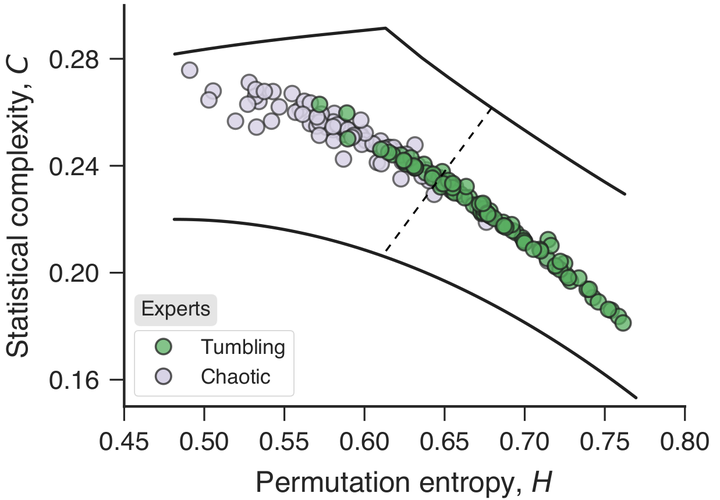
Abstract
Many simple natural phenomena are characterized by complex motion that appears random at first glance, but that often displays underlying patterns and behavior that can be clustered in groups. The movement of small pieces of paper falling through the air is one of these systems whose complete mathematical description seems unworkable. Understanding these types of motion thus demands automated experimentation capable of producing large datasets covering different behaviors – a task that has become feasible only recently with advances in computer vision and machine learning methods. Here we use one of these datasets related to the motion of free-falling paper with different shapes to propose an information-theoretical approach that automatically clusters different types of behavior. We evaluate the permutation entropy and statistical complexity from time series related to the observable area of free-falling paper pieces captured by a video camera. We find that chaotic and tumbling motions have a distinct average degree of entropy and complexity, allowing us to accurately discriminate between these two types of behavior with a simple unsupervised machine learning algorithm. Our method has a performance comparable to other approaches based on physical quantities but does not depend on reconstructing the three-dimensional falling trajectory.